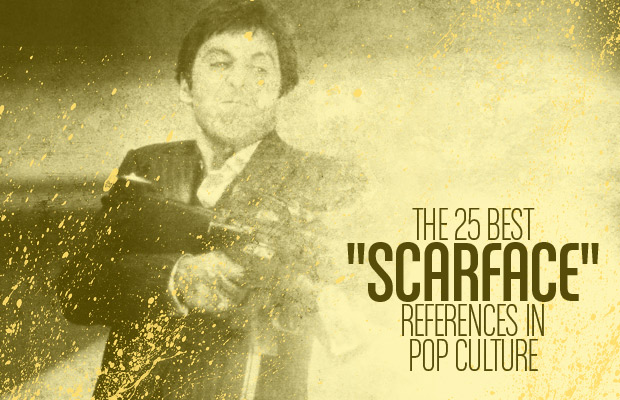
 Hello and welcome to the unofficial Brian De Palma website. Here is the latest news: |
|---|
E-mail
Geoffsongs@aol.com
-------------
Recent Headlines
a la Mod:
Listen to
Donaggio's full score
for Domino online
De Palma/Lehman
rapport at work
in Snakes
De Palma/Lehman
next novel is Terry
De Palma developing
Catch And Kill,
"a horror movie
based on real things
that have happened
in the news"
Supercut video
of De Palma's films
edited by Carl Rodrigue
Washington Post
review of Keesey book
-------------
Exclusive Passion
Interviews:
Brian De Palma
Karoline Herfurth
Leila Rozario
------------
------------
| « | March 2013 | » | ||||
| S | M | T | W | T | F | S |
| 1 | 2 | |||||
| 3 | 4 | 5 | 6 | 7 | 8 | 9 |
| 10 | 11 | 12 | 13 | 14 | 15 | 16 |
| 17 | 18 | 19 | 20 | 21 | 22 | 23 |
| 24 | 25 | 26 | 27 | 28 | 29 | 30 |
| 31 | ||||||
De Palma interviewed
in Paris 2002
De Palma discusses
The Black Dahlia 2006

Enthusiasms...
Alfred Hitchcock
The Master Of Suspense
Sergio Leone
and the Infield
Fly Rule
The Filmmaker Who
Came In From The Cold
Jim Emerson on
Greetings & Hi, Mom!
Scarface: Make Way
For The Bad Guy
Deborah Shelton
Official Web Site
Welcome to the
Offices of Death Records
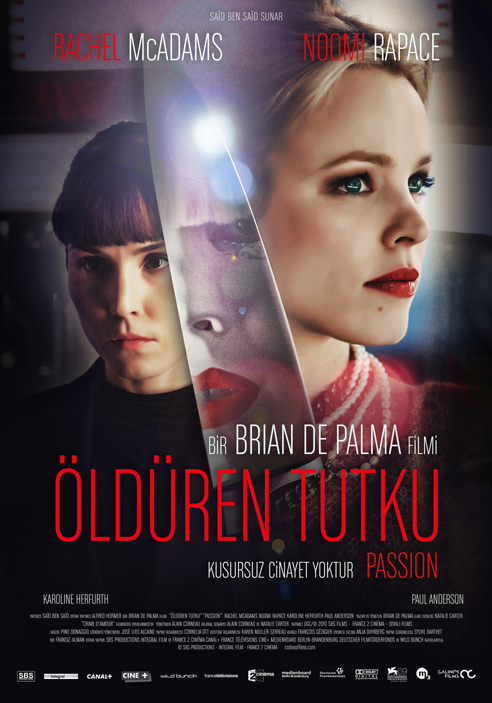 Thanks to Lindsey for pointing us to a Flickr page with some terrific high-quality stills from Brian De Palma's Passion, including the Turkish poster here at left.
Thanks to Lindsey for pointing us to a Flickr page with some terrific high-quality stills from Brian De Palma's Passion, including the Turkish poster here at left.
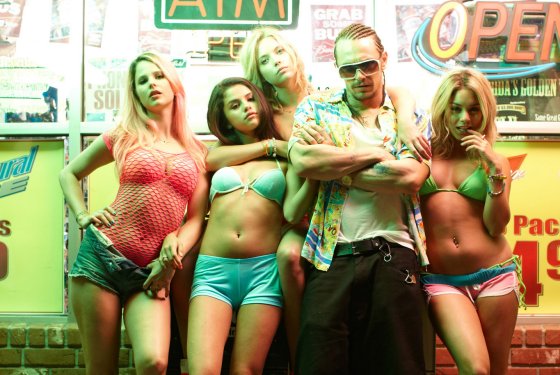
Michael Wilmington, Movie City News
"It may be the apotheosis or culmination of all the Korines: a picture that starts off, as many have noted, like an arty Girls Gone Wild video, inflated to Hieronymus Boschian or Pieter Brughelian Beach Party proportions, and ends up doing a riff on the Al Pacino-Brian De Palma 1983 Scarface, mashed up into Charlie‘s Angels gone homicidal...
"A lot of Spring Breakers is shot and shaped like old-style soft-core porn show– even to the old cheapo porn trick of repeating some scenes and lines over and over. It’s blended with what plays like a teen-slanted ‘83 Scarface pastiche. But, as long as Franco is on screen, it’s a good movie, and there’s also something crazily compelling about the scenes of that huge outdoor dance-a-thon. The ending is beyond ridiculous, and not funny enough to save things. And the four femme stars could have used better parts and better lines, but what the hell. The movie‘s credibility vanishes after the restaurant robbery scene anyway, which is shot flashily, in a Gun Crazy-style single take. But as the man says, who needs credibility? Just pretend…"
David Edelstein, Vulture
"Spring Breakers switches gears midway through with the arrest of these bacchanalians (bikinis behind bars!) and the arrival of James Franco as a flamboyant meth dealer with silver teeth and red-tinted cornrows. He watches them go before a judge and, enraptured, bails them out. 'Sprang break … Sprang break … ' he intones, attempting to lull us with his sexy outlaw incantations. In his lavish manse, he shows off his arsenal, invokes Scarface, and says, 'This is the fuckin’ American dream, y’all.' Every one of Franco’s lines could be the prelude to a rap song too moronic for airplay. 'Sprang break ... Sprang break … ' I wanted to spring-break his silver teeth, but at least he’s more committed here than in his other movie on screens now, Oz the Great and Powerful — a Disney production."
Joshua Rothkopf, Time Out New York
"Already swollen with girl-on-girl flirtation, criminal fantasy and naive dreaminess, the movie explodes into Tampa Bay–set skankitude, where our leads are never out of bikinis, even when flung in jail for trashing a hotel room. They’re bailed out by Alien (James Franco, more alive than ever in the film’s only actual performance), a cornrowed, heavily armed wanksta rapper who nakedly desires them for his posse.
"It all plays out in a final flourish of DayGlo Scarface wish fulfillment, and you can’t really believe what you’re watching. Alien—and Korine—tell us it’s the American dream come true, and even if you resist going there with them, the have-your-cake-and-fling-it-too stupidity is breathtaking. It takes some kind of cracked artistry to put coeds in hot-pink ski masks and have them twirl around to a Britney Spears ballad toting machine guns. Spring Breakers is either an inspired satire of the youth movie or the most irresponsible comedy mainstream Hollywood will never make. The bros in your crowd will call it rad—and radical it is."
Peter Travers, Rolling Stone
"Too bad the movie itself is rarely as outrageous as he is. The promise of nudity and girl-on-girl action among Disney hotties Vanessa Hudgens (High School Musical), Selena Gomez (Wizards of Waverly Place) and Ashley Benson (Pretty Little Liars) is just a porny tease. Candy (Hudgens), Brit (Benson), Faith (Gomez) and Cotty (Rachel Korine, the director's wife) are merely college BFFs yearning for a spring break. Everyone but Faith (she's into Christian studies) agrees to rob a local chicken shack to finance a Tampa getaway. Here's your chance to hear the chirpy Hudgens say, 'Give me your motherfucking money or I'm going to shoot your fucking brains out.' And they're off.
"Alien laps them right up. At his crib, where bongs and blow are plentiful and Al Pacino's Scarface plays on a continuous loop, the coeds live the dream. Violence looms in the form of Archie (Gucci Mane), Alien's gangsta enemy. No sweat. When Alien isn't going down on a gun barrel in a homoerotic domination game, he sits at his poolside piano and croons Britney Spears ballads to the girls, who wear pink ski masks and dance around waving AK-47s."
Katie Calautti, Comic Book Resources
"Sure, it has the aesthetic of a Girls Gone Wild video mashed up with Scarface (and there’s certainly a portion of the film’s audience that will be all too happy to take it at that face value), but deep beyond its epic one-liners, brazen nudity, omnipresent drug use and stylized scenes of criminal activity, there’s a core that reveals an all-too-terrifying truth about the desensitization of youth and the moral quandaries it presents...
"That is to say, after watching Spring Breakers, you’ll have Britney Spears and Skrillex stuck in your head on a loop, you’ll quote (and re-quote, and re-quote) James Franco’s dialogue (his crooning repetition of 'spring breeeeeeak' will haunt your nightmares), you’ll never watch High School Musical the same way again, you’ll feel the crushing urge to view Scarface on repeat, you’ll realize you’re inadequately prepared (abdominally speaking) for swimsuit season, and you’ll suffer the after-effects of an onslaught of so much perverse and perverted imagery that you’ll want to disinfect yourself by taking a bath in (and swallowing shots of) tequila."
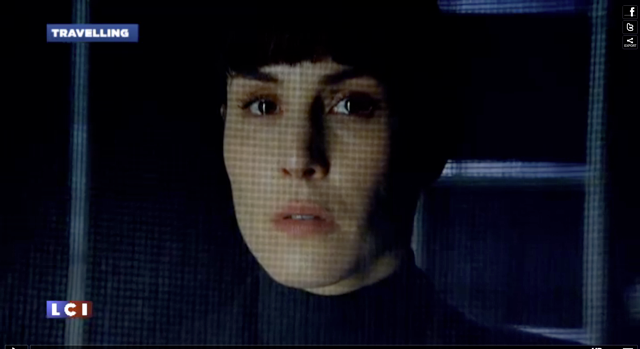
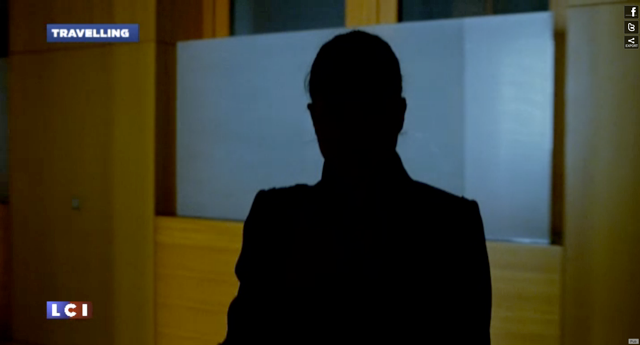
AND SOME OTHERS OUT OF GERMANY AND HONG KONG...


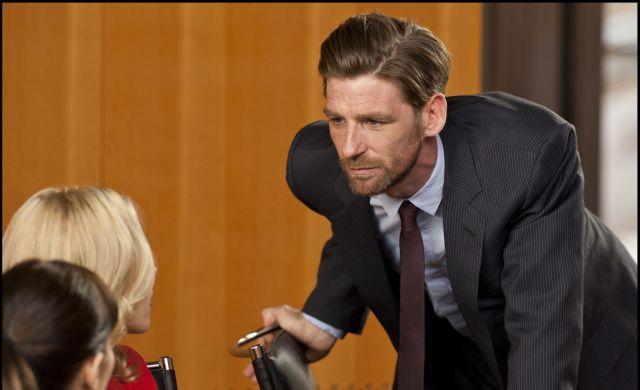

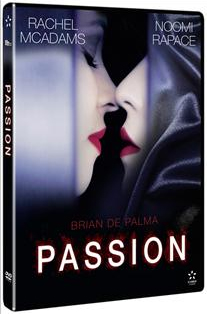 For a few weeks, the IMDB has listed June 19 as the date for the Swedish DVD premiere of Brian De Palma's Passion. Now we have cover art to go with it (which includes a newly-hooded Noomi Rapace). According to Scanbox, the Passion Region 2 DVD and Blu-ray Scandinavian editions, as well as Video-on-Demand, will be available on June 18 in Denmark, and on June 19 in Sweden, Norway, and Finland. The DVD will be in English, with choice of Danish, Swedish, Norwegian, or Finnish subtitles. Passion is expected to be released in North American theaters that same month.
For a few weeks, the IMDB has listed June 19 as the date for the Swedish DVD premiere of Brian De Palma's Passion. Now we have cover art to go with it (which includes a newly-hooded Noomi Rapace). According to Scanbox, the Passion Region 2 DVD and Blu-ray Scandinavian editions, as well as Video-on-Demand, will be available on June 18 in Denmark, and on June 19 in Sweden, Norway, and Finland. The DVD will be in English, with choice of Danish, Swedish, Norwegian, or Finnish subtitles. Passion is expected to be released in North American theaters that same month.
"The girls are mind-fucking each other: Christine uses every psychological means in the book to break Noomi, she traps her, she humiliates her in front of her co-workers, until Noomi finally snaps."
The LCI reporter says, "After his last film flopped, De Palma has turned his back on Hollywood to point his cameras on a Berlin as down-to-earth as it is dreamt up, using his personal grammar with a brilliance as seductive as it is cringe-inducing."
(Thanks to Patrick!)
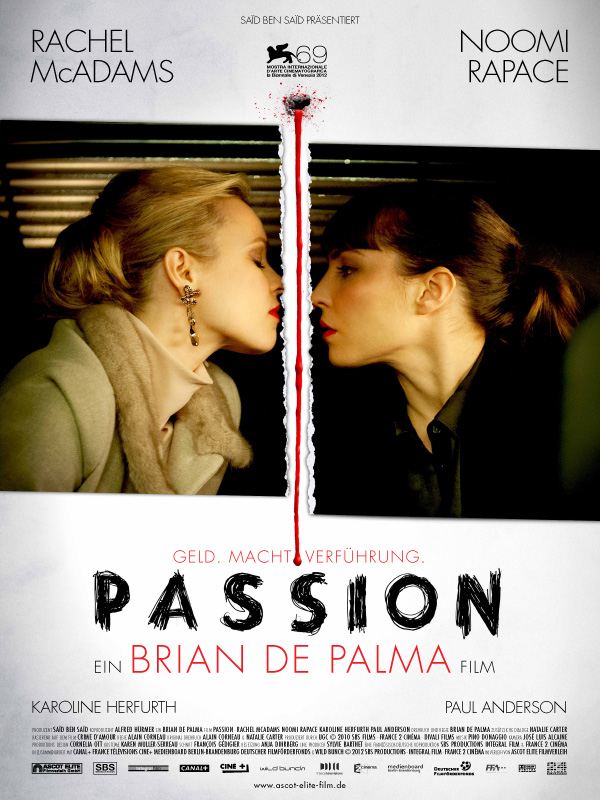
 On Thursday, Feux Croises posted a De Palma Dossier made up of eight new essays about De Palma's cinema. That same day, I posted summaries of the first three essays. Here are summaries of the remaining five:
On Thursday, Feux Croises posted a De Palma Dossier made up of eight new essays about De Palma's cinema. That same day, I posted summaries of the first three essays. Here are summaries of the remaining five:In Woton’s Wake: Un conte d’un sculpteur et d’un cinéaste, Li-chen Kuo looks at how De Palma constructed a film about the cinema via the myth of a sculptor. Kuo notes the opening shot, which shows a bookshelf full of film books, with one title, "Woton's Wake," in flames and leaning against them, signalling a film about cinema. "The idea to animate the inanimable has been linked to cinema from the moment of its invention," Kuo states, "and the story of Pygmalion and Galatea had also been staged in 1898 by Georges Méliès. The film attempts to fix the figures by placing them in another medium and sets motion to the image. Cinema fixes them in their 'life', and thus declares the desire for movement. In sculptural art is also this transformation into 'real', into 'life.' These two arts, film and sculpture, attach themselves to common desires: the desire to see and touch." Kuo links De Palma to the sculptor played by William Finley, the latter creating a woman out of metal trinkets, the former "sculpting a film" out of several types of material, physical or conceptual. "How would you define the act of Brian De Palma in this film?" asks Kuo. "Close to his character, the filmmaker collects fragments of images, movie scenes, diegetic motifs, by cutting the film reel, sticking them back together, and ultimately shaping a new form." Kuo adds that this early short from De Palma "does not explicitly explore the question of point of view." As Luc Lagier has pointed out, Kuo writes, Woton's Wake was made in 1962, prior to JFK's assassination, and "could thus be considered a work still 'innocent'."
In D’envol en chute : ce qui hantera toujours De Palma, Sidy Sakho states that "All De Palma is indeed a history of vertigo, that of a man - often a woman - haunted by an image, a unique sound. The line of nearly all his stories is that of the absolute abandonment of heroes and an ideal that is forever elusive." Sakho further states that the resolution of the puzzle in a De Palma film is "above all a false movement, already dead" (or a stalemate). Sakho elaborates on this by describing the bombastic fanfare of the opening shot (sequence) of Snake Eyes as, cruelly, also being a swan song for Nick Santoro, as well as for the viewer. Sakho suggests that the gaze in De Palma's cinema is, like Ethan Hunt dangling just above the Langley floor in Mission: Impossible, forever caught "between the fall and impact, when fear of death and the hope of a recovery question one another."
In Cils conducteurs, Claire Allouche suggests that Chris Marclay's Up And Out, which presents the moving image of Antonioni's Blow-Up against the sound from De Palma's Blow Out, allows us to see the latter's images again, despite the sound being dissociated from its images. This puts the viewer of Up And out in a similar position to Blow Out's soundman protagonist, Jack. "In this sense," writes Allouche, "the plot of Blow Up could pass for a 'film location scouting' and that of Blow Out for 'film postproduction.'" Allouche further notes that Blow-Up is longer than Blow Out by five minutes, leaving the Marclay film to end in silence. "We do not know the meaning ascribed to Thomas," writes Allouche, "and yet our lost gaze is directed towards the imaginary game of tennis. Up and Out ends in a world where reality does not provide anything more to see and hear. The dark room is an anechoic chamber, a heart beating intensely as at the beginning of the De Palma film. Between terrifying scream and spellbinding silence, Up and Out takes one last breath. The 'blow' reasserts itself. But this time, it is ours."
And finally, in William Finley, fantôme dionysiaque, Laurent Husson offers up a tribute to Finley as an important figure who "decisively contributed to forging the subversive tone of the De Palma cinema."
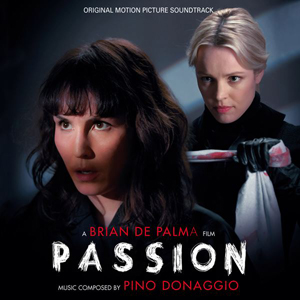 The soundtrack release for Brian De Palma's Passion hit mailboxes early this week, and, well, since I can't see De Palma's new movie yet, I've been listening to his new movie. (speaking of which, I received confirmation from someone in the U.S. today that Passion will indeed open in U.S. theaters sometime in June of this year.) Without having seen the film, I am guessing the track list has been put together in a non-chronological fashion (this has been confirmed in a comment below from someone who has seen the film), to present the music in the most compelling flow possible.
The soundtrack release for Brian De Palma's Passion hit mailboxes early this week, and, well, since I can't see De Palma's new movie yet, I've been listening to his new movie. (speaking of which, I received confirmation from someone in the U.S. today that Passion will indeed open in U.S. theaters sometime in June of this year.) Without having seen the film, I am guessing the track list has been put together in a non-chronological fashion (this has been confirmed in a comment below from someone who has seen the film), to present the music in the most compelling flow possible.In any case, the other Donaggio compositions are phenomenal. The CD opens with the bouncy, sinuous "Twin Souls," which is just heavy enough to avoid sounding like it belongs in a somewhat romantic comedy (like, perhaps, De Palma's Home Movies). "The Breakdown" is a beautiful piano ballad that brings to mind Donaggio's "Sally And Jack" theme from De Palma's Blow Out, especially when it is reprised on the final track, "Last Surprise." It is not until the third track that we get the "Passion Theme," which opens with quickly menacing chords, like a Herrmann-esque surprise, before falling back to a quiet piano motif that soon swells with romantic strings and ominous orchestrations. This is a wonderful theme that never seems to stop rising, with a conclusion that seems to leave everything hanging on the edge. I think my favorite track is "Know That Know," which features a heavy, spaced out string bass rhythm, the spaces filled in with strings and other orchestrations, and sounds like a cousin to Morricone's "Towards The Unknown" from De Palma's Mission To Mars. It ends with a slashing string surprise out of Carrie or Dressed To Kill (and, of course, Herrmann's Psycho). "A Dreamers Dream" features more ominous musings that lead beautifully into the Debussy ballet.
All in all, a strong, achingly beautiful work from Donaggio.
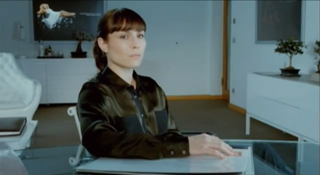 Noomi Rapace spoke with IndieWire's Anne Thompaon, who asked her if she and Rachel McAdams had improvised a lot of their scenes in Brian De Palma's Passion. "We worked closely," Rapace told Thompson. "Rachel and I discussed this script. Actually one scene that didn't belong in the story we took out, and added other things. It was very creative, it was a very different shoot. I see my character as emotionally disturbed in a way that none of my other characters have been. She has a cold calculating psychopathic mind, I did lot of research, so I had to run everything through that. I couldn't work from an emotional ground, as I normally do, so it was different translating: 'how does an emotionally disturbed person, how would she react and think?' So it was for me a different way. De Palma was fun, we had a lot of conversations. We didn't always agree, we're both strong-minded and stubborn. He's interesting and creative, he's a strong character."
Noomi Rapace spoke with IndieWire's Anne Thompaon, who asked her if she and Rachel McAdams had improvised a lot of their scenes in Brian De Palma's Passion. "We worked closely," Rapace told Thompson. "Rachel and I discussed this script. Actually one scene that didn't belong in the story we took out, and added other things. It was very creative, it was a very different shoot. I see my character as emotionally disturbed in a way that none of my other characters have been. She has a cold calculating psychopathic mind, I did lot of research, so I had to run everything through that. I couldn't work from an emotional ground, as I normally do, so it was different translating: 'how does an emotionally disturbed person, how would she react and think?' So it was for me a different way. De Palma was fun, we had a lot of conversations. We didn't always agree, we're both strong-minded and stubborn. He's interesting and creative, he's a strong character."